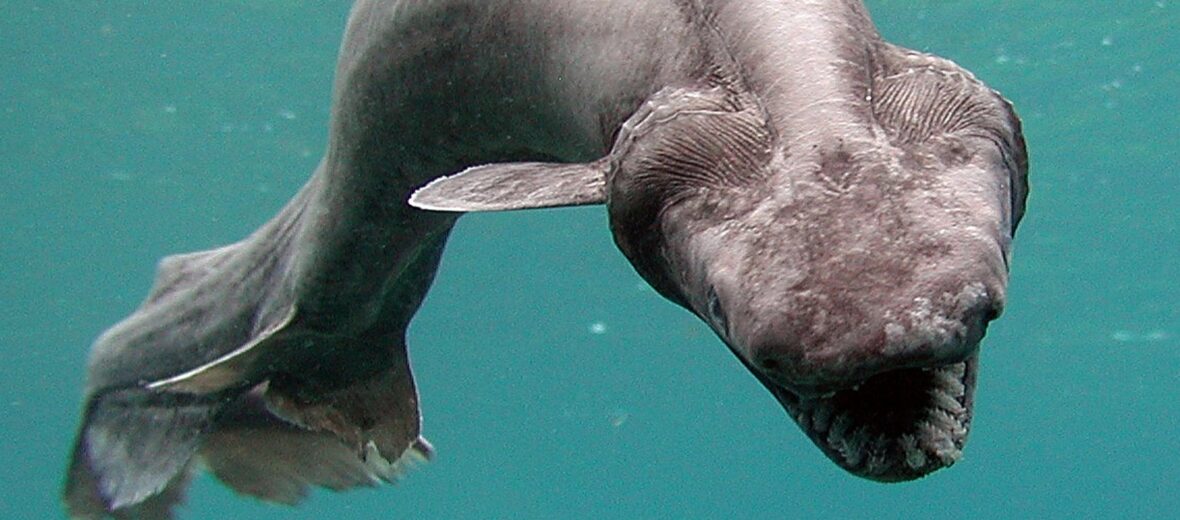
Often called a “living fossil”, the frilled shark has changed little in millions of years. These strange looking, jagged toothed, monsters of the deep are the stuff of science fiction. These fascinating, yet terrifying looking, sharks are quite possibly the stuff of sea serpent legend. It is presumed that they lay in wait for passing prey and lunge to attack them, gripping them in their razor sharp teeth. They are listed as Least Concern by the IUCN.
First the Stats…
Scientific name: Chlamydoselachus anguineus
Weight: Up to 40+ lbs.
Length: Up to 5.6 feet
Lifespan: Up to 25 years
Now on to the Facts!
1.) Their jaws are lined with 25 rows of 300 backward-facing, trident-shaped teeth.
2.) They are named for their gills. The first pair of gills go all the way across their throat and each pair of gills is lined at the tips with a red fringe.
3.) Due to their large jaws and backward-facing teeth, it is assumed that these sharks are able to take in prey half as long as they are.
4.) Upon inspecting the contents of their stomachs it is presumed that their primary prey items are teleost (ray-finned) fishes, cephalopods, and sometimes other sharks!
5.) They have a huge liver packed with hydrocarbons and low-density oils, making this shark naturally buoyant.
But wait, there’s more on the frilled shark!
6.) These sharks live at depths of 390 – 4,200 feet.
7.) The frilled shark is sometimes caught, accidentally, by fishermen searching for other deep sea fish.
Did you know…?
Frilled sharks were first described by German ichthyologist Ludwig H.P. Döderlein, in 1881. However, his papers were lost and the sharks were re-documented in 1884 by Samuel Garman.
8.) Frilled sharks breed year round and the female gives birth to up to 6 pups. They are ovoviviparous (eggs hatch inside the female and are born live).
Now a Short Frilled Shark Video!
Also, check out the Critter Science YouTube channel. Videos added frequently!
Want to suggest a critter for me to write about? Let me know here.



